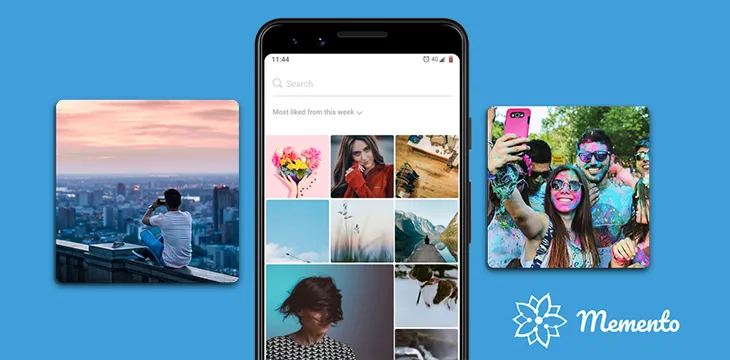|
Getting your Trinity Audio player ready...
|
Memento is another paid social network concept driven by Bitcoin micropayments. Developers of the app, which focuses on visual content and user stories (think Instagram, Pinterest) first pitched their concept at the Bitcoin Association’s second BSV Venture Pitch Day event in February. How have things been going since then? We caught up with co-founder Jeremy Street for an update.
Street said Memento has set its sights initially on getting the product working and building a large user base, since investors consider social media to be a risky proposal before they’ve proven their popularity. The aim is to target “influencers” with large followings on existing popular platforms and offer incentives to switch to Memento—and of course, bring their followers.
Memento currently has an alpha version of its backend, and Street said they’re now looking for front-end developers to build the user interface.
Like other Bitcoin SV (BSV)-based social media platforms (such as Twetch, Streamanity, and the still-in-development Looter) users can connect an existing BSV wallet and start posting/earning straight away. Wallets like HandCash, RelayX and Money Button have made developing social networking concepts much easier, handling both user account authentication and payments.
BSV restores promise of a micropayment economy for social media
“Get paid for likes” is the emerging model for Bitcoin-backed social media apps—and why not? Users have come to realize the value they add to social networks with their creativity brings few real-world rewards. Though the idea of earning income from such engagement isn’t new, it wasn’t possible before Bitcoin came along—and began offering micropayments in a realistic way once more.
We need to say it again: this was one of the initial selling points for Bitcoin over a decade ago. But BTC developers deliberately limited its capacity, meaning the BTC blockchain could only allow a small number of high fee-paying transactions per block.
Proposed “solutions” to the problem include recording transactions on an entirely different network and settling them later on the BTC blockchain (eg: Lightning Network). However these “second layer” solutions have so far proved cumbersome and risky to use—and shift trust in transactions to third parties who exist outside the BTC network.
Bitcoin BSV restored the promise of a micropayment-driven economy when it kept the original, unaltered Bitcoin protocol and dramatically increased its capacity for transactions. Business ideas like Memento are again able to develop and flourish.
Interview with Jeremy Street, Memento co-founder
Why did you choose Bitcoin BSV as the economic platform for Memento, and when did you first become interested in Bitcoin and BSV specifically?
BSV is the only protocol that scales allowing users to perform micro transactions which are intrinsically linked with data. From a development perspective this is a no-brainer—it alleviates the need to integrate with third party payment providers and allows you to store content on-chain without a database. This means users have complete ownership of their content and can monetize it however they wish.
Our interest in Bitcoin began about eight years ago and we’ve been following it on and off from a technical perspective since then. It wasn’t until one of Craig’s Metanet presentations in 2018, however, that we realized we’d finally be able to start developing on the protocol due to its plans for unlimited block sizes. It blows my mind that you have supporters of other protocols that truly believe in limiting the size of blocks. It makes no sense economically and deters engineers from even considering building upon it.
How have things progressed since CoinGeek London?
We’ve been engaging a frontend consultancy for the past few months and we’re at the stage now where we are polishing things off for an alpha release. Progression could always be faster though if we had a frontend developer on our team.
Dan and I also both have full time jobs and live on opposite sides of the world, so we’re juggling this with chipping away at Memento every chance that we get. An 80-hour week is no longer uncommon…
At the moment we are certainly interested in anybody with React/Node.js skills to accelerate bringing Memento to the world. We’ve got some incredibly exciting ideas that don’t actually exist in any app in the world today which we’re really looking forward to implementing.
Did your talk lead to any interesting discussions (eg: investment or other collaborations)?
The general feedback after the pitch was that social media is typically a risky investment. We weren’t expecting to receive investment following the pitch until we’d at least built up a user base. Right now we’re focused on bootstrapping, testing Memento with a small number of users and proving that our business model is sustainable.
How much will you need to curate/control/police content? (eg: policies on copyrighted material, others’ work, porn, etc.)
It’s a good question. Everything that is stored on the blockchain with Memento is encrypted. If a user were to upload infringed or illegal content, upon being notified we would simply flag this content so that it didn’t appear to other users.
In order to post content to begin with, however, users need a wallet such as Money Button and we’re considering authentication such has Google or Facebook. This disincentivizes illegal content because each user can be easily traced.
As well as encrypting all content we are also GDPR compliant and allow our users a lot of flexibility and support in this area which I won’t give away the details to quite yet.
Instagram is very celebrity-driven and you mentioned you’d target ‘influencers’ in the presentation, what sort of incentives/rewards will you offer (if you can say)?
The incredible thing about Memento and other bitcoin applications is that users are rewarded simply by using them—the incentives are built into the protocol. Initially though we’d like to target social media influencers with quality content who are seeking another stream of revenue.
How has the current world situation affected your plans or development roadmap?
I was actually sick a few weeks ago with a fever where I also lost my sense of taste and smell. I won’t know if this was due to the virus until antibody tests are available but luckily it was only mild. Other than this we haven’t been affected greatly. We’re both working from home for our respective employers which gives us more time to dedicate to Memento as we’re not wasting time commuting. It’s hard not seeing friends and family but the silver lining is that it has allowed us to develop our existing ideas, deprioritize other ideas and come up with new, game-changing functionality.
When will the closed beta be available, when are you hoping to launch the open/full version?
We are hoping to have a closed beta released within the next few months with a target production release by the end of the year. For people interested in signing up to the private beta they can visit Memento.

 09-14-2025
09-14-2025 





